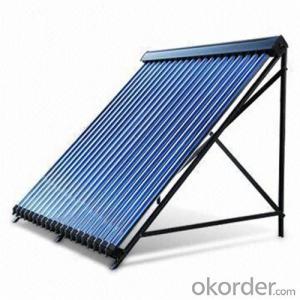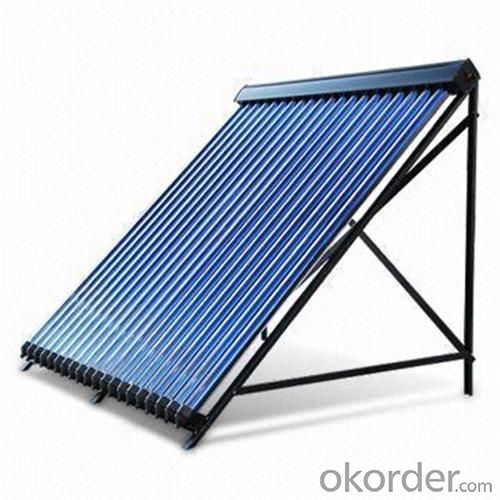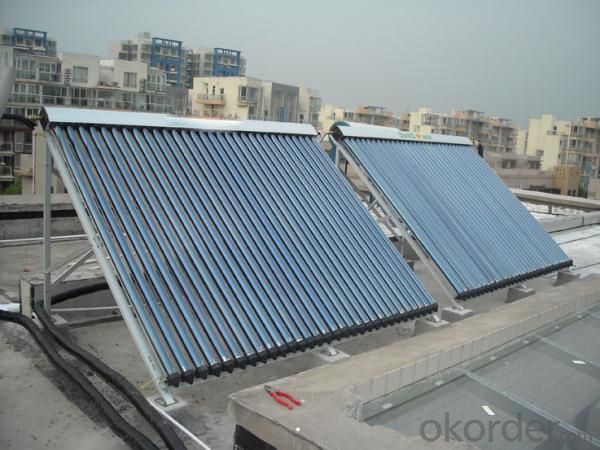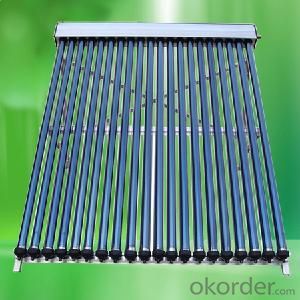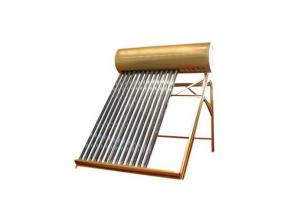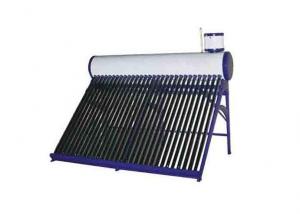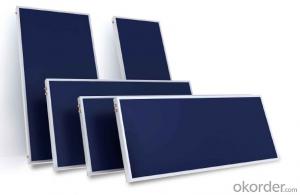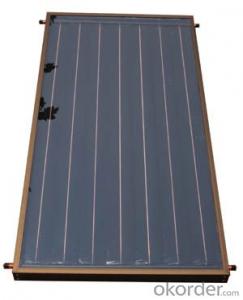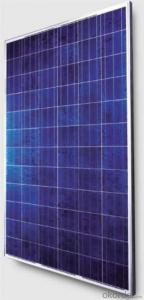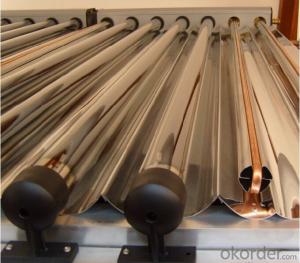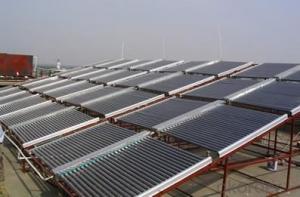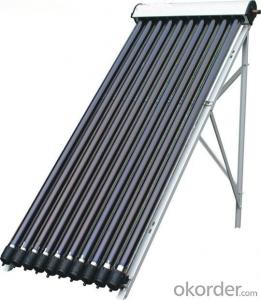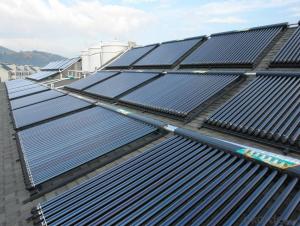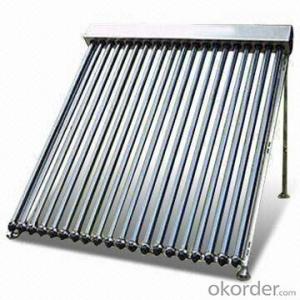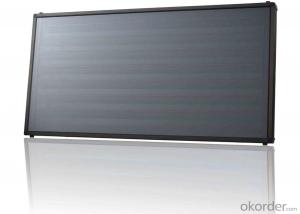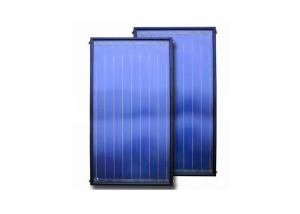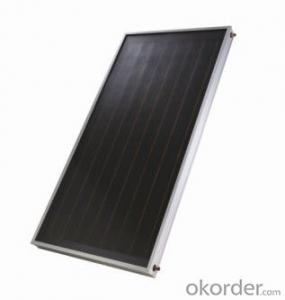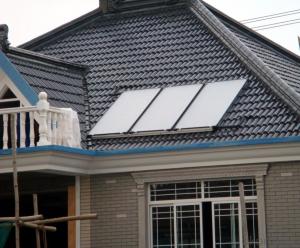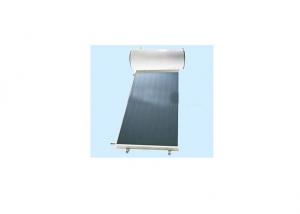Pier Solar Collectors Edition - Pressurized Heater Pipe Solar Collectors for Rooftop
- Loading Port:
- China main port
- Payment Terms:
- TT OR LC
- Min Order Qty:
- 5 set
- Supply Capability:
- 10000 set/month
OKorder Service Pledge
OKorder Financial Service
You Might Also Like
Specifications
manifold (inner) | red copper |
manifold (exterior) | aluminum alloy |
glass tube dimensions | 58mm * 1800mm |
daily efficiency | ≥55% |
heat preservation | 72 hours |
hail resistance | 25mm |
max pressure | 7 bar |
coating of vacuum tube | ALN/AIN-SS/CU |
heat pipe | anti-freezing > -35 degree |
certificate | Solar Keymark, EN12975,SRCC |
Serious Product
Models | L*W*H mm | Vacuum tube | Power output | Efficiency | Header mm | Frame | container loading 20FT/40HQ sets | Gross Weight kg |
SHC-8 | 1917*910*133 | 58*1800*8pcs | 939W | 0.668 | Φ35/1.0 | AL alloy | 185/445 | 27 |
SHC-10 | 1917*1130*133 | 58*1800*10pcs | 1189W | 159/385 | 33 | |||
SHC-12 | 1917*1350*133 | 58*1800*12pcs | 1440W | 149/358 | 40 | |||
SHC-15 | 1917*1680*133 | 58*1800*15pcs | 1815W | 120/290 | 49 | |||
SHC-18 | 1917*2010*133 | 58*1800*18pcs | 2191W | 100/242 | 59 | |||
SHC-20 | 1917*2230*133 | 58*1800*20pcs | 2442W | 87/210 | 66 | |||
SHC-22 | 1917*2450*133 | 58*1800*22pcs | 2692W | 83/202 | 72 | |||
SHC-24 | 1917*2670*133 | 58*1800*24pcs | 2943W | 77/188 | 79 |
Packaging & Delivery
Packaging Details: | Exporting Carton with big foaming protection |
Delivery Detail: | In 10-15 days |
Loading Quantity
Model | Tube | Tube Q.T.Y | Loading Q.T.Y/40HQ |
GSC15 | 58*1800mm | 15pcs | 315sets |
GSC18 | 58*1800mm | 18pcs | 265sets |
GSC20 | 58*1800mm | 20pcs | 248sets |
GSC22 | 58*1800mm | 22pcs | 225sets |
GSC25 | 58*1800mm | 25pcs | 200sets |
GSC30 | 58*1800mm | 30pcs | 168sets |
Principle of solar collector:
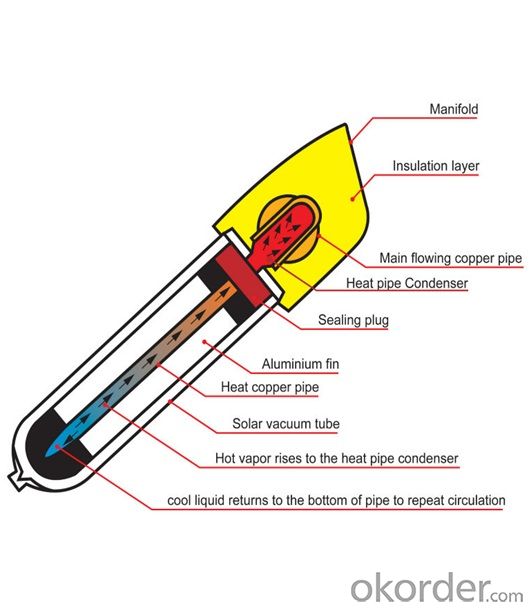
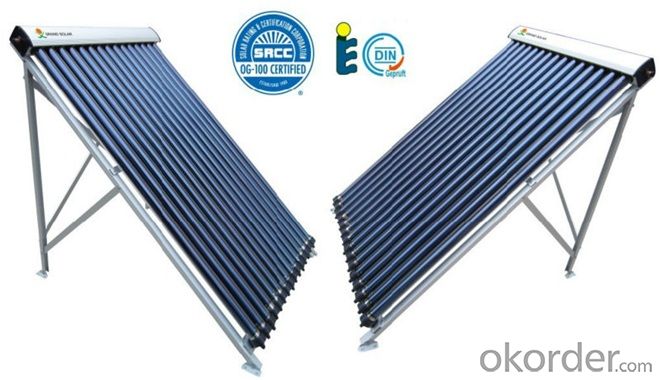
Solar collector details
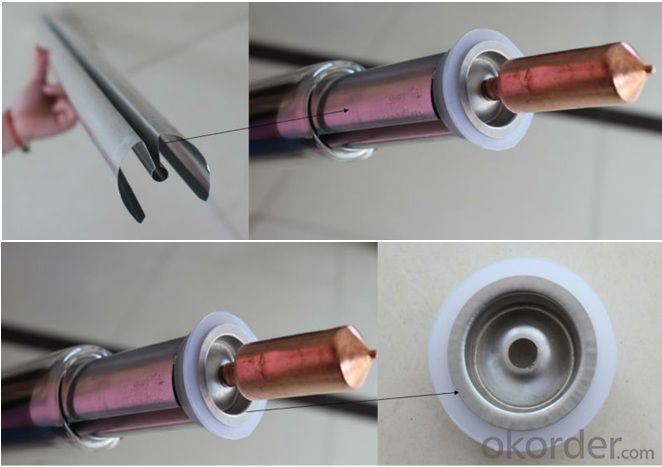
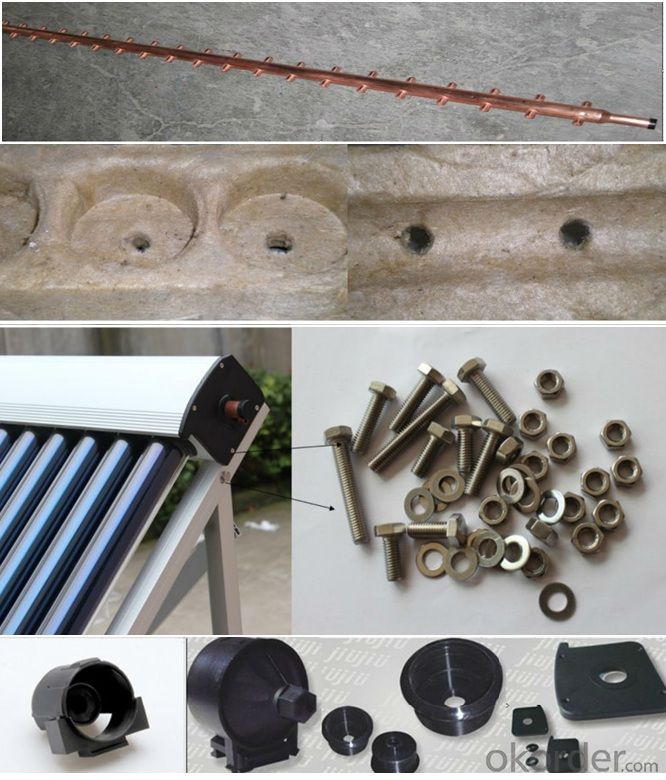
- Q: Can solar collectors be used for heating outdoor spaces?
- Yes, solar collectors can be used for heating outdoor spaces. Solar collectors, such as solar thermal panels or solar air heaters, can harness the sun's energy to heat air or water, which can then be used to warm outdoor spaces. These collectors are designed to absorb sunlight and convert it into heat, making them an efficient and sustainable option for heating outdoor areas.
- Q: Can solar collectors be used for heating water for industrial processes?
- Yes, solar collectors can be used for heating water for industrial processes. Solar thermal systems can provide a cost-effective and environmentally friendly solution for heating large volumes of water in industries such as manufacturing, food processing, and agriculture. By harnessing the energy from the sun, solar collectors can generate heat to meet the hot water demand, reducing reliance on fossil fuels and lowering operating costs.
- Q: Are there any limitations to the angle of installation for solar collectors?
- Yes, there are limitations to the angle of installation for solar collectors. The optimal angle for solar collectors depends on the latitude of the installation location and the time of year. In general, solar collectors should be installed at an angle that maximizes the amount of sunlight they receive throughout the year. In locations closer to the equator, where the sun is higher in the sky year-round, solar collectors are typically installed at a steeper angle, usually around 30 to 40 degrees. This allows for maximum solar radiation absorption throughout the day. In areas farther from the equator, where the sun's angle changes significantly throughout the year, solar collectors are often installed at a shallower angle. This helps to optimize solar energy absorption during the winter months when the sun is lower in the sky. However, there are limitations to the angle of installation. If the angle is too steep or too shallow, it can result in reduced energy production. Steeper angles may cause snow or debris to accumulate on the solar panels, hindering their efficiency. Shallower angles may result in less solar radiation absorption, especially during the winter months. Other factors that may limit the angle of installation include space constraints, structural limitations, and aesthetic considerations. In some cases, the angle of installation may need to be adjusted to accommodate these factors, even if it is not optimal for maximum energy production. Overall, while there are limitations to the angle of installation for solar collectors, careful consideration of the location, time of year, and other factors can help ensure maximum energy production and efficiency.
- Q: What materials are used to make solar collectors?
- Solar collectors are typically made using materials such as glass, copper, aluminum, and various types of polymers.
- Q: Can solar collectors be used in urban areas?
- Yes, solar collectors can be used in urban areas. While space constraints and shading from tall buildings may limit their efficiency, solar collectors can still be installed on rooftops, facades, or in open spaces such as parks and parking lots. Additionally, advancements in technology have led to the development of more compact and efficient solar panels, making them increasingly viable for urban settings.
- Q: Can solar collectors be used in areas with limited access to business networks?
- Yes, solar collectors can be used in areas with limited access to business networks. Solar collectors generate electricity from sunlight, independently of any external network connection. Thus, they can provide clean and sustainable energy even in remote locations or areas with limited infrastructure.
- Q: Can solar collectors be used in disaster-resilient infrastructure?
- Yes, solar collectors can be used in disaster-resilient infrastructure. By harnessing the power of the sun, solar collectors can provide a reliable and sustainable source of energy even during times of disaster or grid failures. This can help ensure that critical infrastructure, such as hospitals, emergency shelters, and communication systems, remain operational and resilient in the face of natural disasters or other emergencies. Additionally, solar collectors can reduce the reliance on traditional energy sources and contribute to a more sustainable and environmentally friendly infrastructure.
- Q: How long does it take to recoup the cost of installing solar collectors?
- The time it takes to recoup the cost of installing solar collectors can vary depending on several factors such as the initial investment, energy consumption, local solar resource, and available incentives. On average, it takes about 5 to 15 years to recover the upfront costs through energy savings. However, with government incentives and falling solar panel prices, the payback period has been decreasing and making solar installations more financially attractive in recent years.
- Q: Can solar collectors be used in agricultural areas?
- Yes, solar collectors can be used in agricultural areas. They can be used to power irrigation systems, provide electricity for farm operations, or heat water for various agricultural processes. Solar collectors are a sustainable and cost-effective solution that can help improve the efficiency and sustainability of agricultural practices.
- Q: Can solar collectors be used in areas with limited access to technical standards?
- Yes, solar collectors can be used in areas with limited access to technical standards. Solar collectors are relatively simple and straightforward in design and operation. They do not require complex technical standards for installation or maintenance. In fact, solar collectors can often be easily installed and maintained by local communities with basic technical knowledge and training. This makes them a viable and sustainable option for generating clean energy in areas with limited access to technical standards.
Send your message to us
Pier Solar Collectors Edition - Pressurized Heater Pipe Solar Collectors for Rooftop
- Loading Port:
- China main port
- Payment Terms:
- TT OR LC
- Min Order Qty:
- 5 set
- Supply Capability:
- 10000 set/month
OKorder Service Pledge
OKorder Financial Service
Similar products
Hot products
Hot Searches
Related keywords
